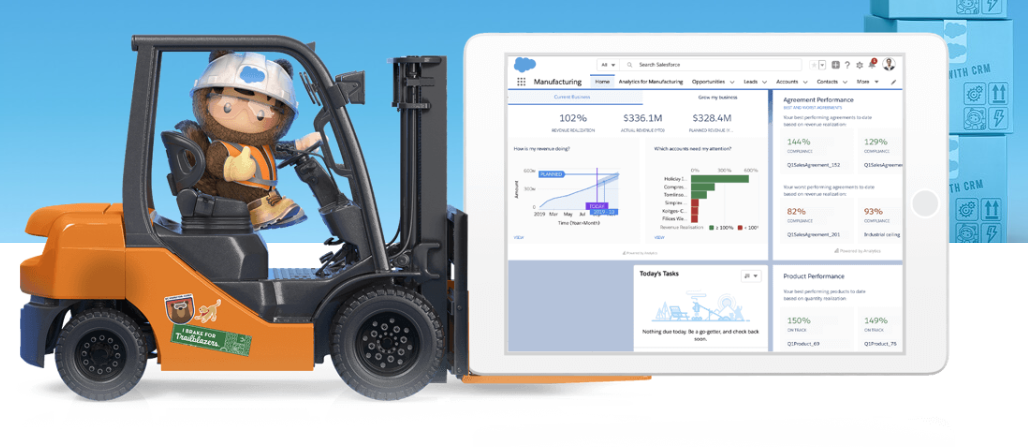Manufacturers face a combination of robust decision making components that are factors for any business globally. With the ongoing unknown of 2020, and incoming massive new tariffs (trade deal phase 1), moving some parts of your production back to North America could become the new norm as early as 2021. The component price will always be lower overseas, but what if you could control your entire manufacturing process? Gaining flexibility is now available with the use of Salesforce’s Manufacturing Cloud. Before discussing the motives of moving production back onshores, it’s important to understand how manufacturing evolved.
Early Manufacturing
In the early 1970-1980s, manufacturing within the United States was booming. Local manufacturing jobs were thriving, and all production was done here on shores through quick runs. The era of quick runs soon became an era of the past. Having to go back and forth on prototypes became expensive, and with rising new technology came a vision of manufacturing processes (Structural Design) done quicker and cheaper. China began creating large factories with low-cost labor and tolling resulting in a more affordable and faster way of manufacturing. With labor costs so cheap, China would go on to become the world leader in manufacturing.
Starting to Move Production Back
As 2020 moves forward and companies start to prepare for 2021, moving some operations to North America is becoming the priority with most manufacturers. When you factor in the new tariffs from the trade deal and managing the supply chain from afar, it becomes a lot to maintain. Final assembly, software packaging, trail producing, and testing are aspects of production that can be moved back to the United States or Mexico. Moving production back onshore is an opportunity to take some of the raw components and assemble them in the US. For example, final assembly in Mexico could become extremely cost-effective with easy access of driving materials across the border. Having one-week shipments being readily available vs. six-week shipments allows you to be less dependent on your supply chain. Integrating your Sales and Operations Planning (S&OP) with Manufacturing Cloud will give you control over your entire business processes.
Salesforce Manufacturing Cloud
The advantage of adding Manufacturing Cloud to your S&OP is that it can drive demand, and tell your factory what to build in real-time based upon your specific schedule. Adding modules in your system through real-time reporting in manufacturing will provide you visibility into what your factories are currently building, what product is coming in, and more. With a central location of all your data and correct scheduling, your sales team will be updated and on the same page. Data spread out across multiple spreadsheets or silos will cause various problems for your company in tracking, updating, and sharing deals. Overall, integrating your manufacturing processes into manufacturing cloud gives you the flexibility of not being so dependent on products coming from offshore.

Our Manufacturing Experience
Corrao Group’s experience and discipline with manufacturing pain points date back to 1982 with our Managing Partner. Jack Corrao has developed numerous operational infrastructures to support hardware and software companies to deliver the best in breed solutions. Since 2008, Corrao Group has been helping manufacturers utilize Salesforce to create an automated closed-loop system for channel-centric manufacturing. We’ve worked with nearly 1,000 customers, implementing, customizing, and optimizing Salesforce and have been everyday power users ourselves since 2008. Corrao Group can help you maximize your investments in Salesforce and Manufacturing Cloud. For more information, please visit our Salesforce page. To learn more information about us, please visit our website.


